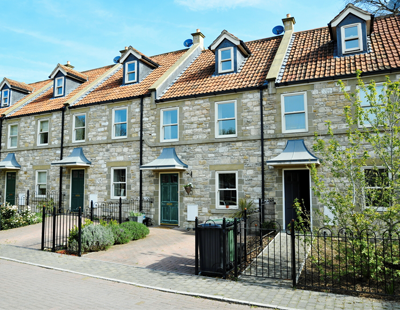
The Bank of England has raised interest rates for the first time in more than three years, in response to surging price rises.
Most analysts believe the increase – to 0.25 per cent from 0.1 per cent- will make negligible difference to the housing market.
The decision by the Bank of England will add just over £15 to the typical monthly repayment for a tracker mortgage customer. A standard variable rate mortgage-holder is likely to pay nearly £10 extra a month.
Around 50 per cent of all homes are owned outright anyway, with no mortgage owed on them, and of the rest around three quarters have fixed rate mortgage deals, meaning their repayments won’t change until their current deal ends.
The remaining two million owners are on standard variable rate mortgages or tracker mortgages so their repayments will go up as individual mortgage lenders increase their rates in response to the Bank of England announcement.
Cory Askew, head of sales at Chestertons, says: “We expect the Bank of England’s decision to increase the interest rate to 0.25% to have very limited impact on property buyers and existing homeowners. Further indicating that buyer demand remains strong, is the fact that we have seen no seasonal slowdown this year.”
Simon Gammon of Knight Frank adds: “By raising the base rate it’s clear that the Bank of England believes the economy will shrug off most of the effects of Omicron. Getting a grip on rising inflation appears to be the number one priority.
“Mortgage rates on the high street have been edging upwards during recent weeks in anticipation of this moment and it’s clear the lenders believe there could be at least one more hike in the base rate next year.”
“This rate rise may not be significant but it is a clear statement of intent” says Vanessa Hale, head of insights and residential research at Strutt & Parker.
“The rise has been a long time coming, and with inflation now at decade high levels, there really is little alternative. The rate rise has been priced in to mortgages, and with fixed mortgages making up around 80% of the current market, the housing sector is unlikely to be impacted too dramatically.
“The reality is that demand for housing continues to outstrip supply which will sustain prices for 2022. But with the cost of living continuing to rise, this could have an impact on the housing market for the medium term.”
Eleanor Bateman, policy officer at Propertymark, comments: “The increase in base rate to 0.25 per cent is a small and necessary step and one that most had anticipated for some time.
“Mortgage rates have been creeping up over the past few months, and while those on variable rates will see payments increase, the cost of borrowing remains low relative to historic levels.
“Though, traditionally, the winter months see a decline in activity, our housing market report shows sustained demand with average sales agreed maintained to the end of October.
“With indications that lifestyle factors are continuing to prompt many into making a move, we do not expect the announcement to have a significant, negative impact on the market.”













